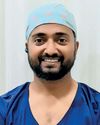Micro-hospitals are primarily used to assess and treat less acute inpatients closer to a patient’s home

In the western world, the healthcare industry has seen the value that ‘micro hospitals’ offer. Healthcare system providers are establishing small, comprehensive hospitals in neighborhoods where people reside and also looking at such facilities to create a competitive edge by outspreading their brand to bridge gaps in the market. These facilities, as opposed to urgent care centres and stand-alone emergency departments, provide similar services to the community as a traditional hospital, though on a smaller scale with quicker yet compassionate care.
Micro-hospitals are set up in smaller geographies and underserved areas, where the cost viability of a full-service hospital is absent. Yet they must be within a reasonable distant from a larger, multi-disciplinary hospital to ensure timely transportation of an acute patient. Most of all, micro-hospitals are simple, less expensive and faster to set up than conventional ones.
This concept is very much applicable to India, what with the categorisation of cities into metros, II and III tier. The last two are clear candidates for micro-hospitals. Despite its scale, it is essential that micro hospitals maintain standards of healthcare delivery and comply with all applicable central and state licensing and regulatory requirements as traditional hospitals. This would also make their patients eligible for better health insurance reimbursement.
この記事は Healthcare Radius の June 2018 版に掲載されています。
7 日間の Magzter GOLD 無料トライアルを開始して、何千もの厳選されたプレミアム ストーリー、9,000 以上の雑誌や新聞にアクセスしてください。
すでに購読者です ? サインイン
この記事は Healthcare Radius の June 2018 版に掲載されています。
7 日間の Magzter GOLD 無料トライアルを開始して、何千もの厳選されたプレミアム ストーリー、9,000 以上の雑誌や新聞にアクセスしてください。
すでに購読者です? サインイン

SpOvum launches Al-powered platform to boost patient support in assisted reproductive technology
The platform offers personalized information based on individual ART-related concerns, drawing from reliable, indexed medical guides to provide fact-based, tailored answers.

Hearzap launches Al-powered Philips HearLink 50 miniRITE
The company is projected to expand across 250 stores by 2026 and envisions accessible and affordable hearing care across the country.

Red.Health launches Al-driven medical emergency platform
In medical emergencies, every second matters but the current emergency medical systems face many challenges

OmniActive acquires ENovate Biolife
The company aims to double its top line, targeting Rs 2,000 crores within the next 5 to 6 years from the present Rs 1,000 crores.

5-year-old fish bone removed from 61-year-old's abdomen
The patient had previously undergone an endoscopic procedure five years ago at another hospital to remove a fishbone, but the current one had likely been missed at that time.

Large brain aneurysm treated using advanced stenting method
Aneurysm is a bulge or ballooning in a blood vessel of the brain. It’s often described as looking like a berry hanging on a stem.

37-year-old pregnant woman treated for aggressive breast cancer
Given the complexity of her condition, the team worked closely to develop a treatment plan that would balance the needs of both mother and babies.

45-year-old treated with robotic-assisted hernia surgery
This surgery marks a significant milestone for Park Hospital, which has successfully completed 50 robotic-assisted procedures.

Healthium Medtech, Healthcare Sector Skill Council (HSSC) sign MoU to boost skill development in Indian healthcare
Healthium and HSSC will collaborate to deliver training programs aimed at skilling, reskilling and upskilling healthcare workers, enabling them to address evolving challenges in the field.

Advanced ambulance fleet launched for Maharashtra's emergency services
The announcement comes amid ongoing bilateral meetings between Prime Minister Narendra Modi and Prime Minister Pedro Sanchéz Perez Castejon of Spain.